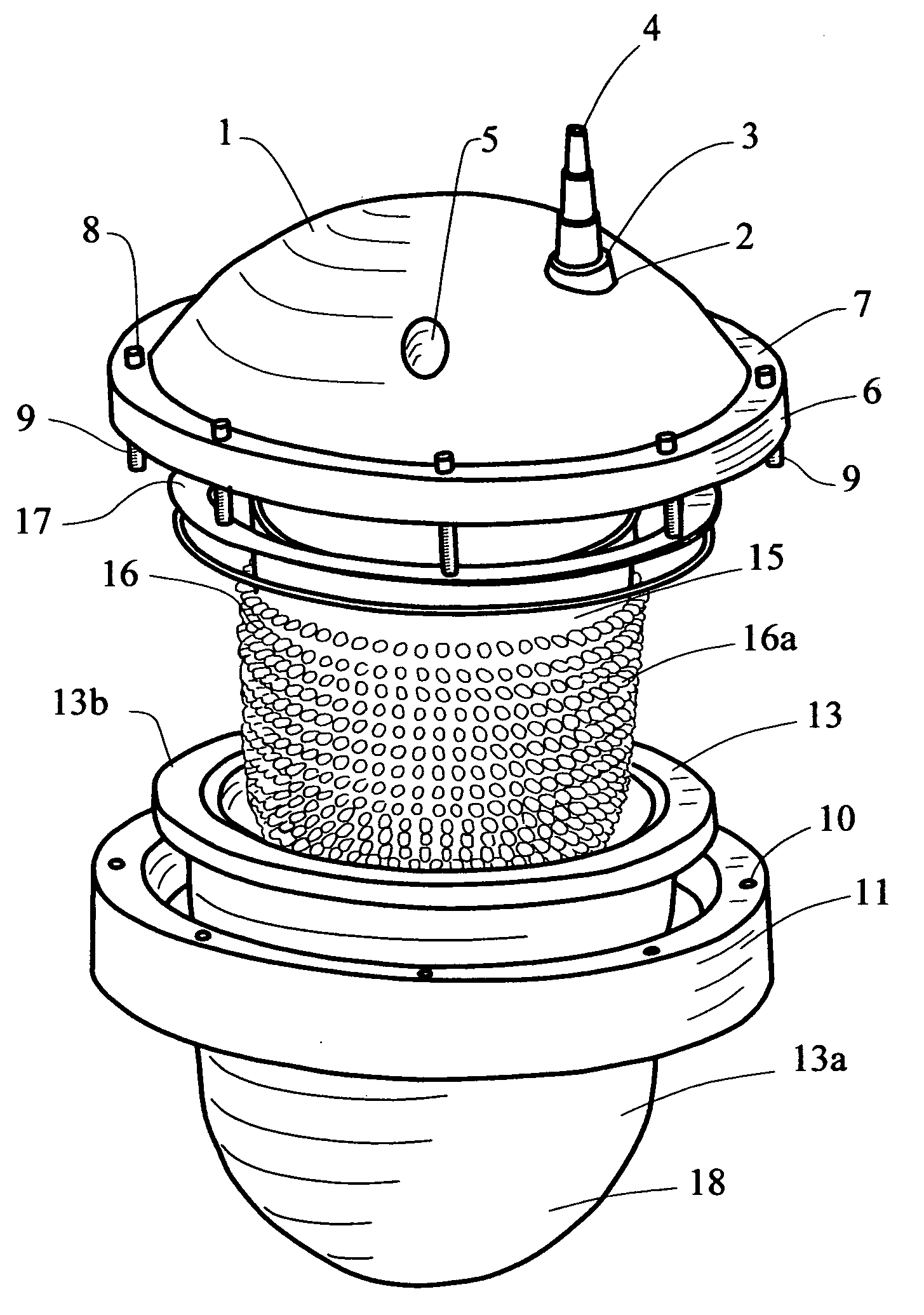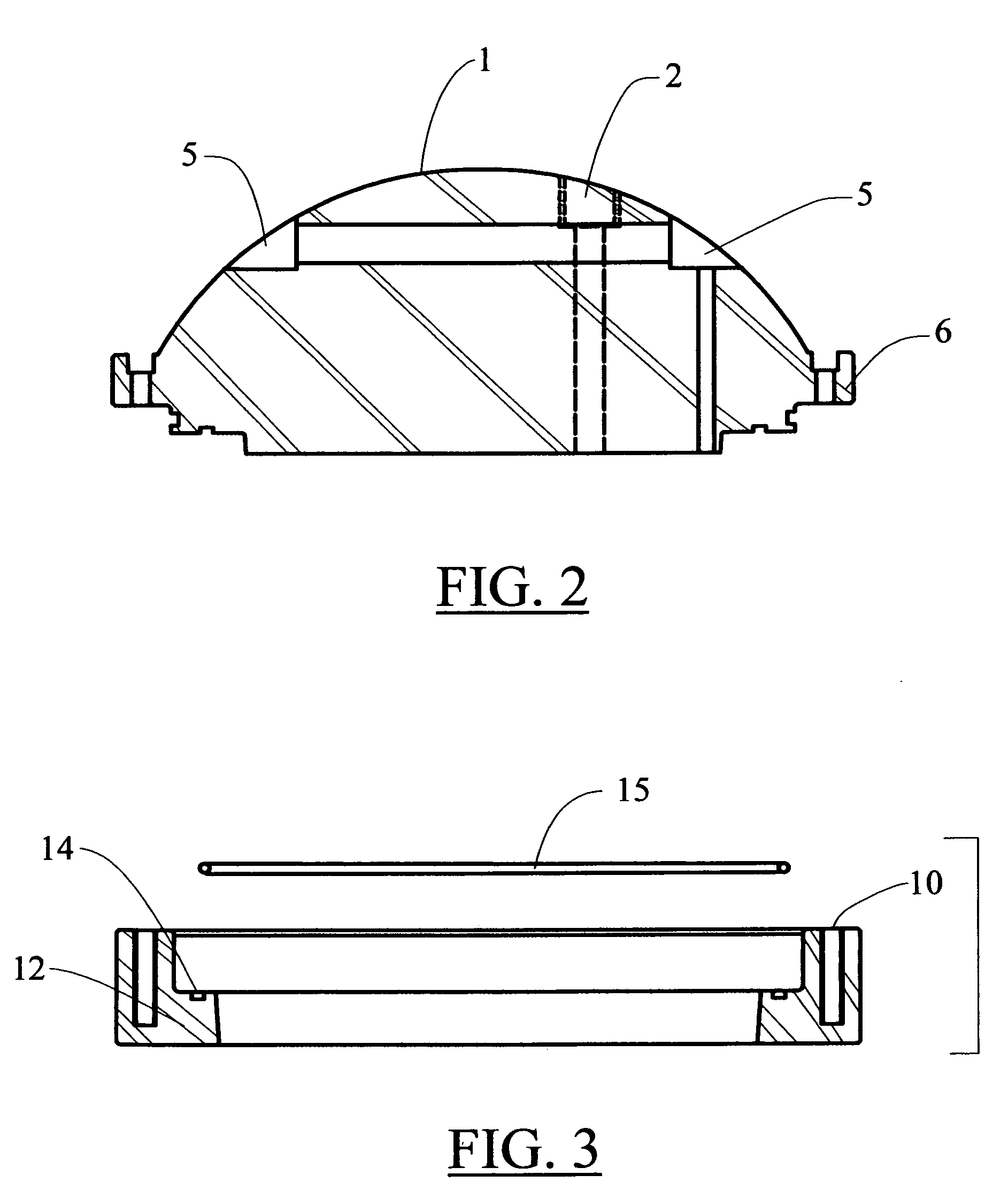Submersible lamp for use in fotoperiod in processes of handling of salmon species
a technology of photoperiod and submerged lamps, which is applied in the direction of lighting applications, protection devices for lighting, domestic lighting, etc., can solve the problems of inability to take full advantage of existing infrastructure, no optimum results for trout, and less success, and achieve energy-saving effects
- Summary
- Abstract
- Description
- Claims
- Application Information
AI Technical Summary
Benefits of technology
Problems solved by technology
Method used
Image
Examples
Embodiment Construction
[0036]The Invention refers to a submergible lamp for its use or application in photoperiod in processes of smolting, feeding and optimum handling of the reproductive process of salmon species, whose source of illumination are a group of green LED luminaries issuing light with an intensity of 500 to 550 nanometres, by means that allow for a lower consumption than the lamps currently in use and which not only represent economies in terms of costs, but also a favorable environmental impact in terms of a lower consumption of fuel or batteries, which might eventually represent a danger to the environment, becoming waste and by demanding a substantial infrastructure in their installation.
[0037]In order to achieve the optimum characteristics of this invention, a technical analysis of the aquiculture of the zone was carried out, revealing the lackings, needs and technological progress made in various aspects. In support of the present invention, an intensive bibliographic review on the endo...
PUM
 Login to View More
Login to View More Abstract
Description
Claims
Application Information
 Login to View More
Login to View More - R&D
- Intellectual Property
- Life Sciences
- Materials
- Tech Scout
- Unparalleled Data Quality
- Higher Quality Content
- 60% Fewer Hallucinations
Browse by: Latest US Patents, China's latest patents, Technical Efficacy Thesaurus, Application Domain, Technology Topic, Popular Technical Reports.
© 2025 PatSnap. All rights reserved.Legal|Privacy policy|Modern Slavery Act Transparency Statement|Sitemap|About US| Contact US: help@patsnap.com



